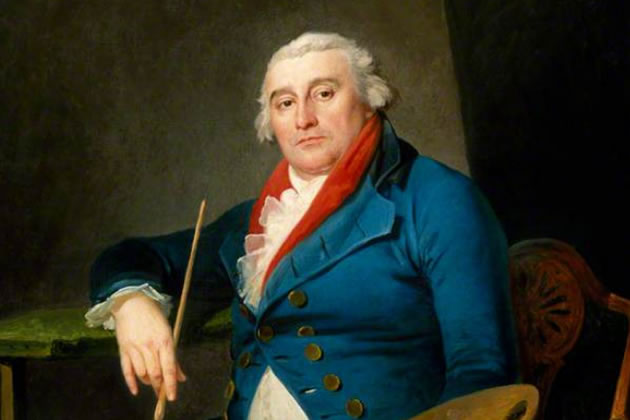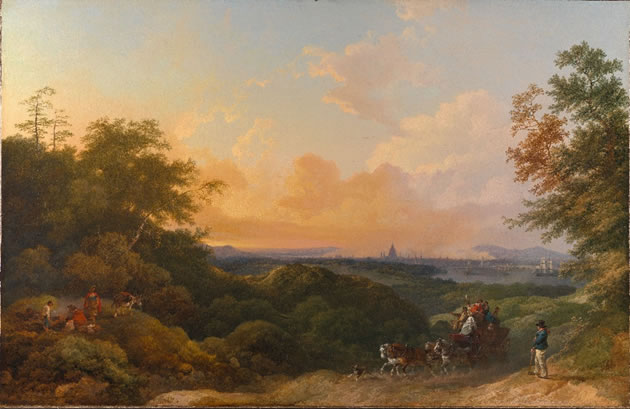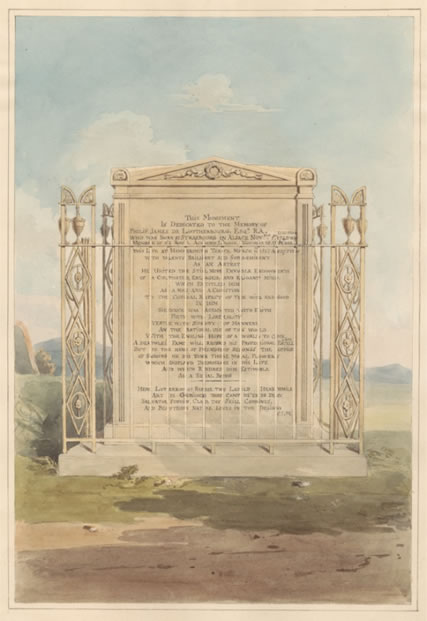Artist and kabbalist lived on Hammersmith Terrace and is buried in Chiswick

A painting of Philippe De Loutherbourg is in the National Portrait Gallery
Buried in the churchyard of St Nicholas, Chiswick is a feted landscape and maritime artist, stage designer, inventor, mason, mystic faith healer, kabbalist, alleged bigamist and former resident of number 7 Hammersmith Terrace.
Philippe De Loutherbourg was undoubtedly multi-talented, but his fame as an artist and ground-breaking set designer was matched by the notoriety of his private life, some questionable marriages and dubious dabbling in quackish enterprises and the occult.
De Loutherbourg, already a successful landscape artist in France, and one who had caught the eye of Louis XIV, moved to Britain in 1771 to pursue a more lucrative career as a theatre designer. His most spectacular innovation, the Edophusikon was a revolutionary mechanical theatre and the precursor to the cinema of today.
Loutherbourg was elected a full member of the Royal Academy in 1781, where he exhibited rural landscape paintings which influenced other great English artists such as another former Hammersmith resident, J.M.W. Turner. But the Italian trickster, Count Alessandro di Cagliostro, taught him about the occult and faith healing and it was as a result of de Loutherbourg’s dalliance in these enterprises which caused a near riot in the quiet backwater of Hammersmith Terrace, where he lived in numbers 7 and 8 between 1795 and 1799.

Philippe-Jacques de Loutherbourg, The Evening Coach, London in the Distance, 1805, Oil on canvas, Yale Center for British Art
Art historian and lecturer, Hugh Belsey, MBE, Chairman of the Emery Walker Trust and an expert in 18th century British Art, says of de Loutherbourg, “He was a wonderful artist and his set designs drew as much admiration as the performances on them. But he was an absolute chancer”.

Daniel Lysons, British, Tomb of Philip James de Loutherbourg, from Chiswick Churchyard, Yale Center for British Art
You can discover more about this lovable rogue at a live, interactive talk, Philippe James de Loutherbourg: an Early Resident of Hammersmith Terrace, on 23 March at 6pm, part of a programme of monthly events via Zoom organised by Emery Walker’s House Trust. Entry is by donation. You are asked to prebook via Emerywalker.org.uk. The house reopened on 3 March and prebooking for guided tours is available now.
Lucinda MacPherson
Coming Up Next
27 April at 6pm - Furniture and the Arts and Crafts home, given by Max Donnelly
Furniture defined the character of Arts and Crafts interiors. Drawing largely on examples from the Victoria and Albert Museum’s collection, Max Donnelly will consider the philosophies that motivated designers, and the variety of contexts in which furniture was produced, from designer-makers to established cabinet making firms. He will also look at how furniture was marketed and retailed, and some of the ways it was used and presented in homes at the turn of the twentieth century.
Max Donnelly FSA is the Curator of 19th Century Furniture and Woodwork at the Victoria and Albert Museum and a trustee of Emery Walker’s House.
The Emery Walker Trust is a registered charity which aims to preserve and open the House for as many people to enjoy as possible. The Trust also aims to improve knowledge of the Arts & Crafts movement and the life and work of Sir Emery Walker.
Like Reading Articles Like This? Help Us Produce More This site remains committed to providing local community news and public interest journalism. Articles such as the one above are integral to what we do. We aim to feature as much as possible on local societies, charities based in the area, fundraising efforts by residents, community-based initiatives and even helping people find missing pets. We’ve always done that and won’t be changing, in fact we’d like to do more. However, the readership that these stories generates is often below that needed to cover the cost of producing them. Our financial resources are limited and the local media environment is intensely competitive so there is a constraint on what we can do. We are therefore asking our readers to consider offering financial support to these efforts. Any money given will help support community and public interest news and the expansion of our coverage in this area. A suggested monthly payment is £8 but we would be grateful for any amount for instance if you think this site offers the equivalent value of a subscription to a daily printed newspaper you may wish to consider £20 per month. If neither of these amounts is suitable for you then contact info@neighbournet.com and we can set up an alternative. All payments are made through a secure web site. One-off donations are also appreciated. Choose The Amount You Wish To Contribute. If you do support us in this way we’d be interested to hear what kind of articles you would like to see more of on the site – send your suggestions to the editor. For businesses we offer the chance to be a corporate sponsor of community content on the site. For £30 plus VAT per month you will be the designated sponsor of at least one article a month with your logo appearing if supplied. If there is a specific community group or initiative you’d like to support we can make sure your sponsorship is featured on related content for a one off payment of £50 plus VAT. All payments are made through a secure web site. |
March 21, 2022